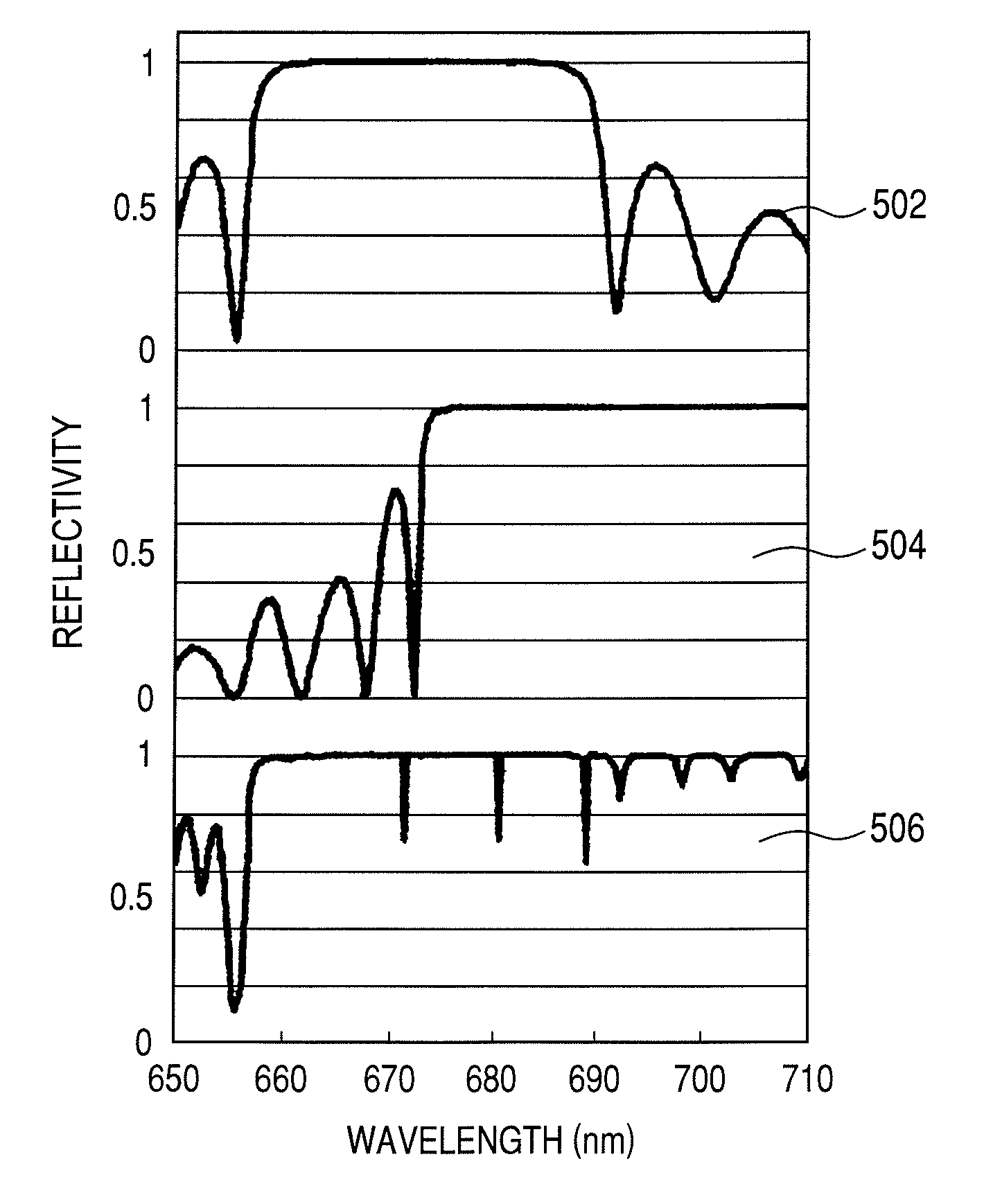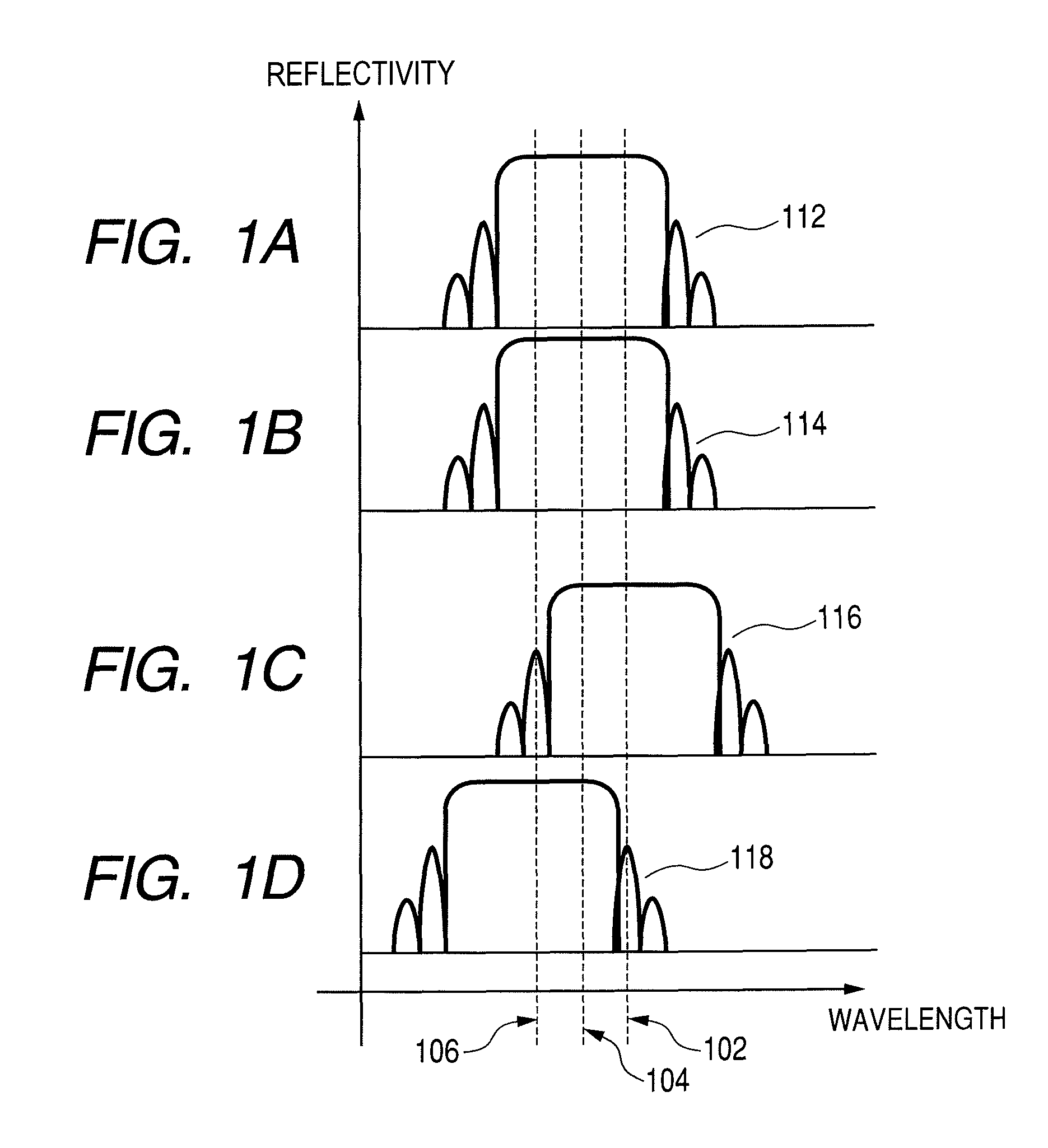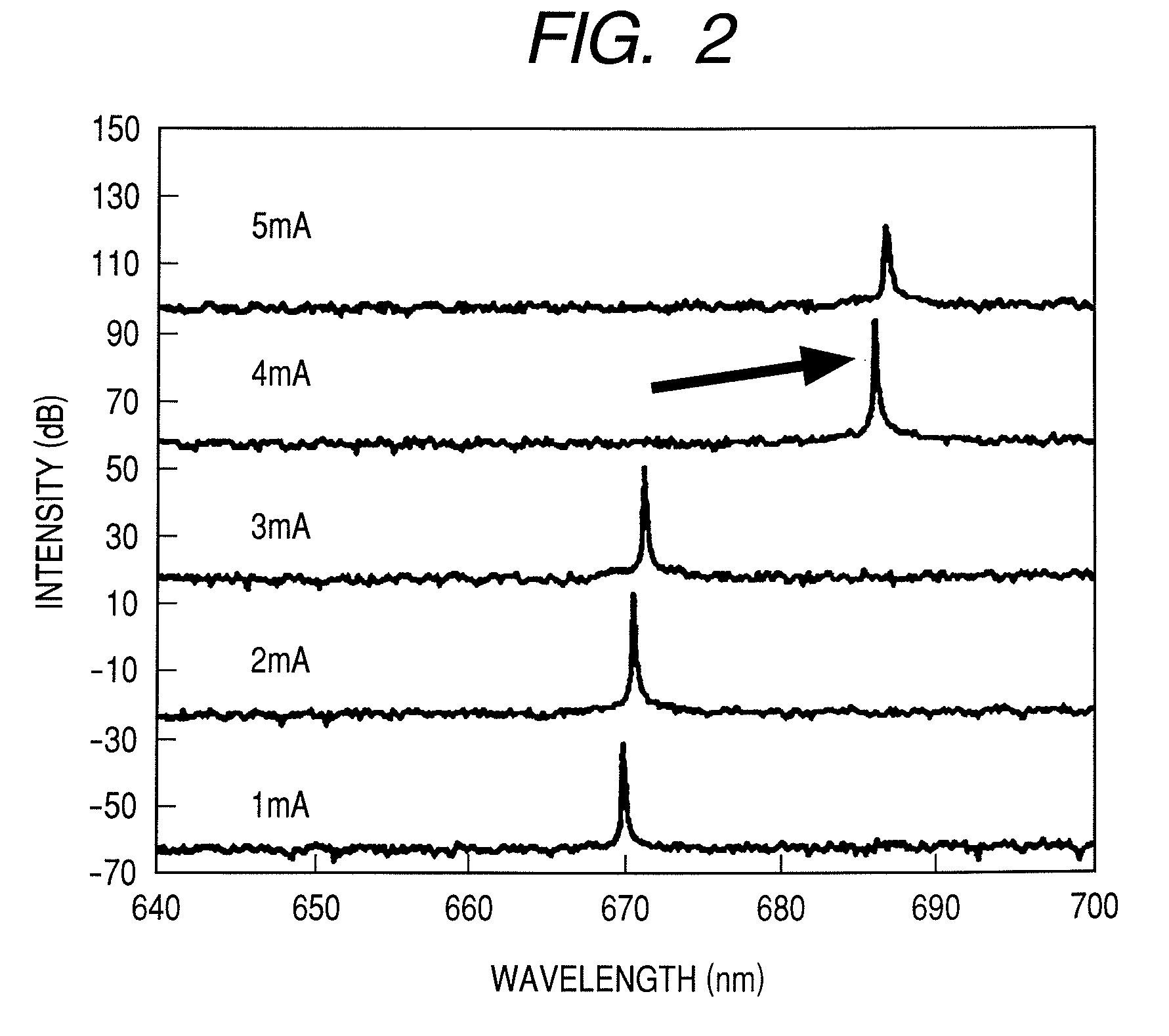Surface-emitting laser and optical apparatus formed by using surface-emitting laser
a laser and surface-emitting technology, applied in semiconductor lasers, lighting and heating devices, instruments, etc., can solve the problems of multi-longitudinal mode oscillation or longitudinal mode hopping, and achieve the effect of stable beam spot, and suppressing longitudinal mode hopping
- Summary
- Abstract
- Description
- Claims
- Application Information
AI Technical Summary
Benefits of technology
Problems solved by technology
Method used
Image
Examples
first embodiment
[0066](Overall Configuration)
[0067]The configuration of the first embodiment, which is a surface-emitting laser that operates in a resonant mode of 680 nm, will be described below.
[0068]FIG. 3 is a schematic cross sectional view of the first embodiment, which is a red surface-emitting laser, illustrating the layer structure thereof.
[0069]Referring to FIG. 3, the red surface-emitting laser has an n-type GaAs substrate 322, a lower distributed Bragg reflector 302, a first cavity section 304, a second cavity section 306 and an upper distributed Bragg reflector 308.
[0070]More specifically, the lower distributed Bragg reflector 302 is formed by laying films of n-type AlAS and those of n-type Al0.5Ga0.5As to a predetermined thickness. Similarly, the upper distributed Bragg reflector 308 is formed by laying films of p-type Al0.9Ga0.1As and those of p-type Al0.5Ga0.5As to a predetermined thickness.
[0071]The first cavity section 304 is formed by using n-type Al0.9Ga0.1As. The second cavity s...
second embodiment
[0100]The second embodiment differs from the above-described first embodiment in that it is provided with a light absorption layer.
[0101]FIG. 6 is a schematic cross sectional view of the surface-emitting laser of the second embodiment, which is a red surface-emitting laser, illustrating the layer structure thereof.
[0102]The components of this embodiment same as those of the first embodiment illustrated in FIG. 3 are denoted respectively by the same reference symbols and will not be described here any further.
[0103]The difference between the surface-emitting laser of this embodiment and that (FIG. 3) of the first embodiment lies in the structure of the first cavity section 704.
[0104]Referring to FIG. 6, the first cavity section 704 of this embodiment is formed by two layers including a 2 μm-thick n-type Al0.35Ga0.65As layer 724 and a 2 μm-thick n-type Al0.9Ga0.1As layer 726. A layer that gives rise to absorption mainly on the basis of band-to-band transition in resonant modes (at 671...
third embodiment
[0123]The third embodiment is an optical apparatus formed by applying a surface-emitting laser according to the present invention, the configuration of which will be described below.
[0124]More specifically, an image-forming apparatus formed by using an array of red surface-emitting lasers according to the present invention will be described as an optical apparatus.
[0125]FIGS. 8A and 8B schematically illustrate an electrophotographic recording type image forming apparatus where a red surface-emitting laser array of this embodiment is installed.
[0126]FIG. 8A is a schematic plan view of the image forming apparatus and FIG. 8B is a schematic lateral view of the apparatus.
[0127]FIGS. 8A and 8B illustrate a photosensitive member 900, an electrostatic charger 902, a developer 904, a transfer charger 906, a fixer 908, a rotary polygon mirror 910 and a motor 912 as well as a red surface-emitting laser array 914, a reflector 916, a collimator lens 920 and a f-θ lens 922.
[0128]The image formin...
PUM
 Login to View More
Login to View More Abstract
Description
Claims
Application Information
 Login to View More
Login to View More - R&D
- Intellectual Property
- Life Sciences
- Materials
- Tech Scout
- Unparalleled Data Quality
- Higher Quality Content
- 60% Fewer Hallucinations
Browse by: Latest US Patents, China's latest patents, Technical Efficacy Thesaurus, Application Domain, Technology Topic, Popular Technical Reports.
© 2025 PatSnap. All rights reserved.Legal|Privacy policy|Modern Slavery Act Transparency Statement|Sitemap|About US| Contact US: help@patsnap.com



